Why is operation delayed a few minutes after I restart my Panasonic Air Conditioner?
- JJessica HowardSep 2, 2025
The delay in operation after restarting your Panasonic Air Conditioner is a protection mechanism for the unit’s compressor.

Why is operation delayed a few minutes after I restart my Panasonic Air Conditioner?
The delay in operation after restarting your Panasonic Air Conditioner is a protection mechanism for the unit’s compressor.
Why does airflow continue from my Panasonic CS-E9LKEW Air Conditioner even after operation has stopped?
The airflow that continues from your Panasonic Air Conditioner even after operation has stopped is due to the extraction of remaining heat from the indoor unit, which can take up to 30 seconds.
Why does my Panasonic CS-E9LKEW Air Conditioner make a water flowing sound during operation?
The water flowing sound you hear during the operation of your Panasonic Air Conditioner is due to refrigerant flow inside the unit.
Why does mist emerge from my Panasonic CS-E9LKEW Air Conditioner indoor unit?
Mist emerges from the indoor unit of your Panasonic Air Conditioner due to the condensation effect caused by the cooling process.
Why does my Panasonic CS-E9LKEW make a cracking sound during operation?
The cracking sound during operation of your Panasonic Air Conditioner is due to changes in temperature causing the expansion and contraction of the unit.
What to do if my Panasonic CS-E9LKEW Air Conditioner does not receive the signal from the remote control?
If your Panasonic Air Conditioner isn't receiving the signal from the remote control, make sure the receiver isn't obstructed. Be aware that certain fluorescent lights may interfere with the signal transmitter; consult an authorized dealer if this is the case.
Why is my Panasonic Air Conditioner noisy during operation?
If your Panasonic Air Conditioner is noisy during operation, check if the unit has been installed at an incline and ensure the front panel is closed properly.
What to do if my Panasonic CS-E9LKEW is not working efficiently?
If your Panasonic Air Conditioner's heating or cooling isn't working efficiently, try the following: ensure the temperature is set correctly, close all doors and windows, clean or replace the filters, and clear any obstructions at the air inlet and outlet vents.
Why does my Panasonic CS-E9LKEW emit water or steam from the outdoor unit?
The water or steam emitted from the outdoor unit of your Panasonic Air Conditioner is due to condensation or evaporation occurring on the pipes.
What to do if my Panasonic Air Conditioner unit stops and the timer indicator blinks?
To address this issue, use the remote control to retrieve the error code: press for 5 seconds, then press until you hear a beep sound and note the error code. For certain errors, you may restart the unit with limited operation, indicated by 4 beeps during start-up. If the problem persists, turn the unit off and provide the error code to an authorized dealer.
| Type | Split System |
|---|---|
| Cooling Capacity | 2.5 kW |
| Heating Capacity | 3.2 kW |
| Energy Efficiency Ratio (EER) | 3.21 |
| Seasonal Energy Efficiency Ratio (SEER) | 6.1 |
| Power Supply | 220-240V, 50Hz |
| Refrigerant | R32 |
| Energy Efficiency Class Cooling | A++ |
| Energy Efficiency Class Heating | A+ |
Explains multi-unit system space saving by connecting multiple indoor units.
Details indoor unit operation in multi-split systems, including mode priority.
Guidance on cleaning the indoor unit, including prohibited methods and detergents.
Identifies and describes key parts like front panel, receiver, and e-ion filters.
Explains the meaning of various indicator lights on the remote control.
Covers turning unit on/off, setting temperature, modes, and fan speed.
Details airflow direction and quiet environment functions.
Explains ECO PATROL, e-ion air purifying, and quick temperature features.
Instructions on setting timers and important operational notes.
Describes symptoms that do not indicate malfunction, such as mist or sounds.
Lists checks to perform before calling for servicing for common issues.
Details limitations and influences on the ECO PATROL sensor's detection.
Procedures for retrieving error codes and recommendations for non-use.
Lists critical issues requiring consultation with an authorized dealer.
Information on the proper collection and disposal of electrical equipment and batteries.
Step-by-step instructions for preparing and setting up the remote control.
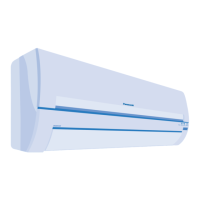

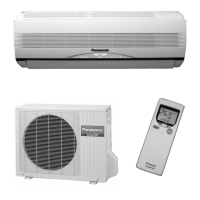
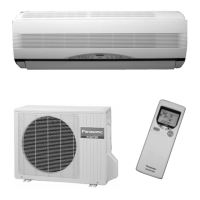
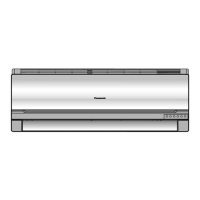

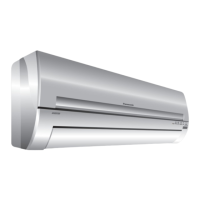

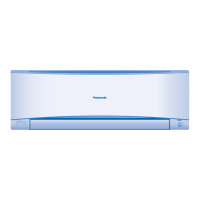

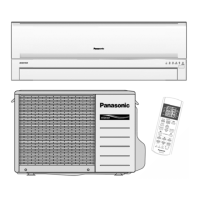

